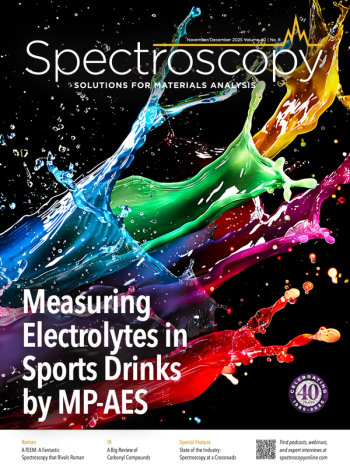
Using Near-Infrared Spectroscopy to Analyze E-Cigarettes
A team of researchers is using near-infrared spectroscopy (NIR) coupled with partial least squares (PLS) to analyze the e-liquid components of e-cigarettes.
Electronic cigarettes, or e-cigarettes, have seen a surge in popularity in recent years, accompanied by a proliferation of device varieties and e-liquid formulations. Keeping pace with this growth and the increasingly stringent legal and regulatory requirements facing e-cigarette manufacturers.
A study, published in Scientific Reports, assesses the potential of near-infrared (NIR) spectroscopy, coupled with partial least squares (PLS) regression, to rapidly determine the levels of essential e-liquid components (1). These components, including propylene glycol (PG), vegetable glycerol (VG), water, and nicotine, are crucial for ensuring the safety and quality of e-cigarettes.
The research addresses the growing demand for swift and accurate methods to assess the composition of e-liquids, especially because of regulatory requirements mandating disclosure of ingredients and their quantities. Previous studies have highlighted discrepancies between claimed and measured concentrations of PG and VG in commercial e-cigarettes, underscoring the necessity for precise measurement techniques.
While traditional methods such as gas chromatography-mass spectrometry (GC–MS) have been employed for e-liquid analysis, they often involve time-consuming sample preparation and analysis, making them less ideal for rapid quality control. In contrast, NIR spectroscopy, a well-established technique used in various industries, offers several advantages for e-liquid analysis. NIR is known for its speed, non-destructive nature, minimal sample preparation requirements, and the ability to simultaneously measure multiple analytes. The major components of e-liquids, including PG, VG, water, and nicotine, exhibit strong NIR absorbances due to the presence of relevant functional groups.
The research team used NIR spectroscopy coupled with PLS regression to establish calibration models for these e-liquid constituents. A diverse set of reference e-liquids, encompassing different concentration ranges, flavorings, and additional ingredients, was analyzed to develop accurate calibration models. These models demonstrated exceptional performance, with R-squared values (R2) exceeding 0.995 for PG, VG, water, and nicotine.
To validate the effectiveness of NIR spectroscopy, the researchers analyzed commercial e-liquids using both NIR and GC methods. The results showed a strong correlation between NIR-predicted values and those obtained through GC analysis for PG, VG, and nicotine, all with R-squared values exceeding 0.955. However, due to the relatively high limit of quantification (LOQ) of the GC method (2.6% w/w) compared to e-liquid content (0–18% w/w), there was less consistency in the case of water concentration. The LOQ of the NIR method for water was found to be only 0.6% w/w, suggesting that NIR spectroscopy may offer greater accuracy for measuring water levels, especially at lower concentrations.
Despite certain limitations, such as potential interference from compounds in e-liquids, the findings of this study indicate that NIR spectroscopy combined with PLS regression is a promising tool for the rapid, simultaneous, and high-throughput measurement of PG, VG, water, and nicotine levels in most commercial e-liquids. This innovation could revolutionize quality control processes in the e-cigarette industry, ensuring that consumers have access to safe and accurately labeled products.
This article was written with the help of artificial intelligence and has been edited to ensure accuracy and clarity. You can read more about our
Reference
Hoffmann, A. R.; Jeffery, J.; Dallin, P.; Andrews, J.; Brokl, M. Rapid Determination of Levels of the Main Constituents in E-Liquids by Near Infrared Spectroscopy. Scientific Reports 2023, 13 (1). DOI:10.1038/s41598-023-40422-z.
Newsletter
Get essential updates on the latest spectroscopy technologies, regulatory standards, and best practices—subscribe today to Spectroscopy.


